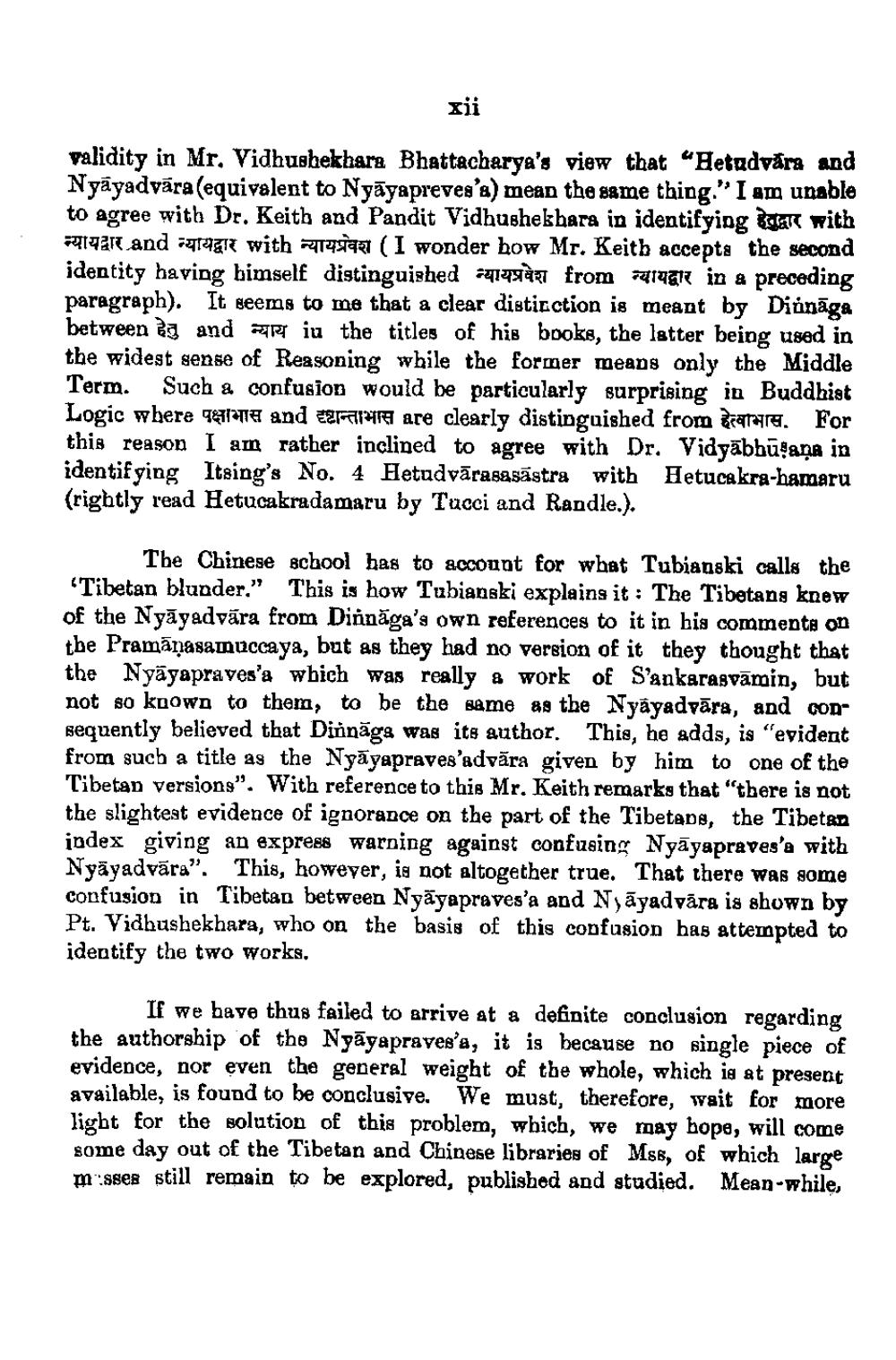________________
xii
validity in Mr. Vidhushekhara Bhattacharya's view that "Hetadvåra and Nyāyadvára (equivalent to Nyāyapreves's) mean the same thing." I am unable to agree with Dr. Keith and Pandit Vidhushekhara in identifying Bear with न्यायद्वार and न्यायद्वार with न्यायप्रवेश (I wonder bow Mr. Keith accepts the second identity having himself distinguished 1992 from 1961 in a preceding paragraph). It seems to me that a clear disticction is meant by Diināga between lo and it in the titles of his books, the latter being used in the widest sense of Reasoning while the former means only the Middle Term. Such a confusion would be particularly surprising in Buddhist Logic where 9911778 and 21H are clearly distinguished from the. For this reason I am rather inclined to agree with Dr. Vidyābbūšana in identifying Itsing's No. 4 Hetadvārasasāstra with Hetucakra-hamaru (rightly read Hetucakradamaru by Tucci and Randle.).
The Chinese school has to account for what Tubianski calls the "Tibetan blunder." This is how Tabianski explains it: The Tibetang knew of the Nyāyadvāra from Dirnăga's own references to it in his comments on the Pramānasamuccaya, but as they had no version of it they thought that the Nyāyapraves'a wbich was really & work of S'ankarasvāmin, but not so koown to them, to be the same as the Nyâyadvāra, and consequently believed that Dinnāgs was its author. This, he adds, is "evident from such a title as the Nyāyapraves'advāra given by him to one of the Tibetan versions". With reference to this Mr. Keith remarks that "there is not the slightest evidence of ignorance on the part of the Tibetans, the Tibetan index giving an express warning against confusing Nyāyapraves'a with Nyäyadvāra". This, however, is not altogether true. That there was some confusion in Tibetan between Nyāyapraves'a and Nyāyadvāra is shown by Pt. Vidhushekhara, who on the basis of this confusion has attempted to identify the two works.
If we have thus failed to arrive at a definite conclusion regarding the authorship of the Nyāyapraves'a, it is because no single piece of evidence, nor even the general weight of the whole, which is at present available, is found to be conclusive. We must. therefore, wait for more light for the solution of this problem, which, we may hope, will come some day out of the Tibetan and Chinese libraries of Mss, of which large masses still remain to be explored, published and studied. Mean-while,




